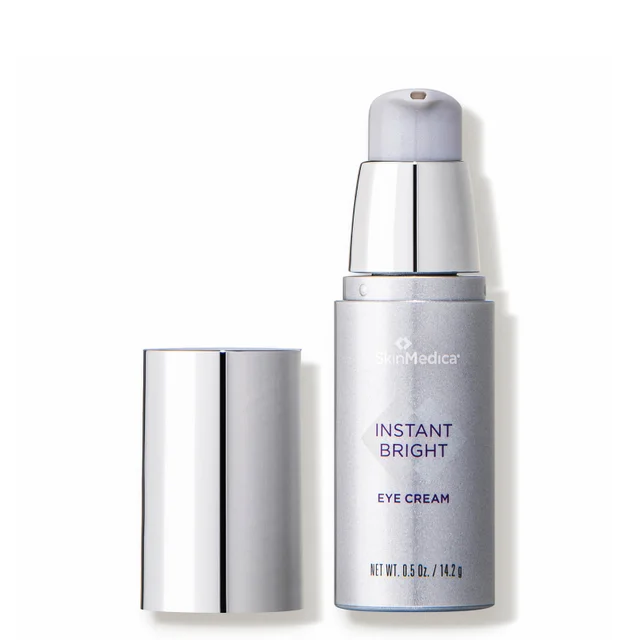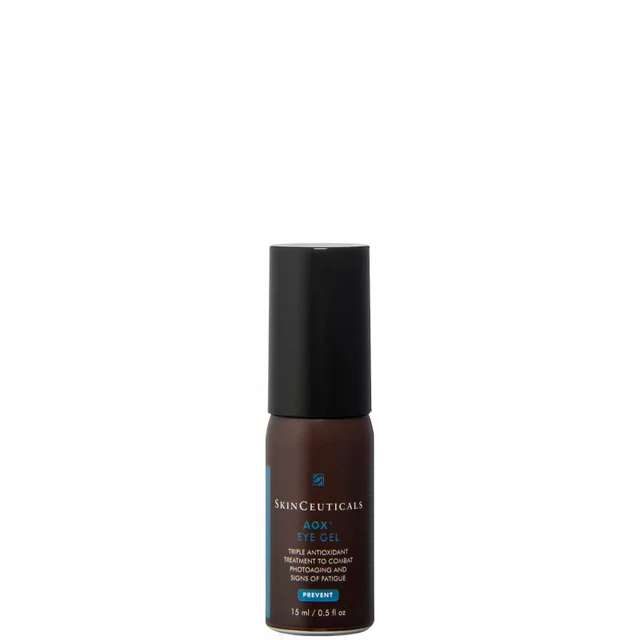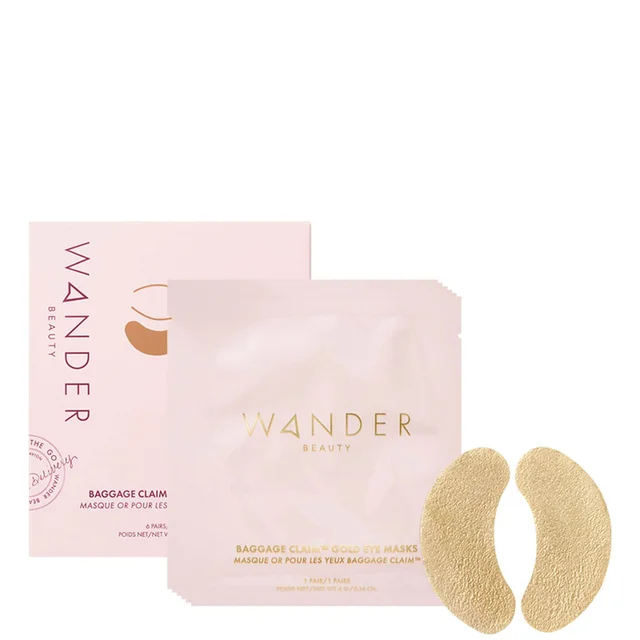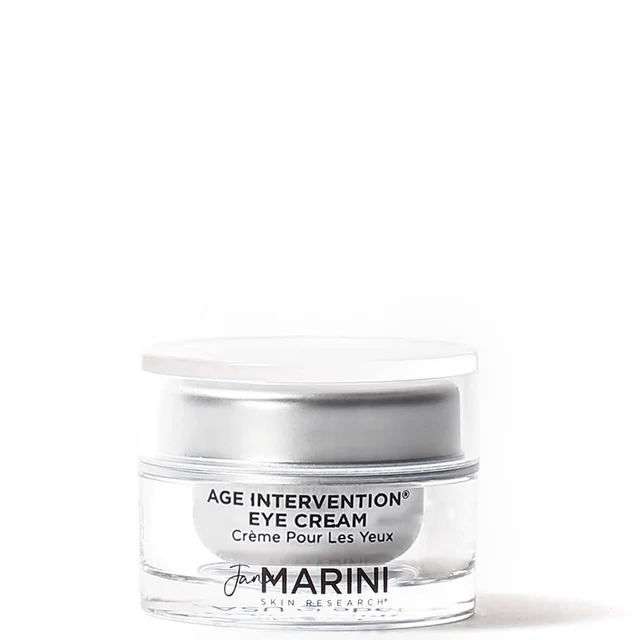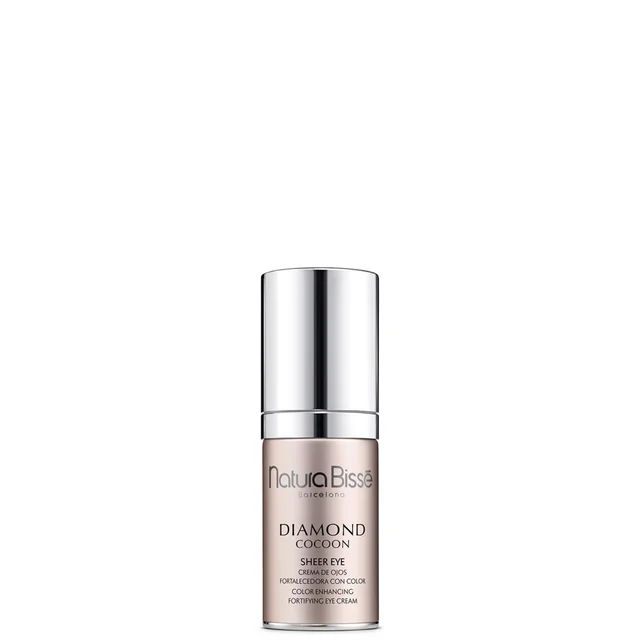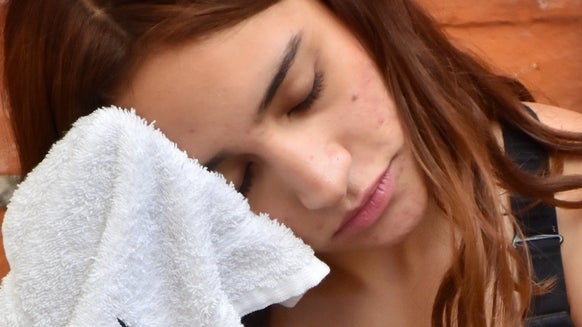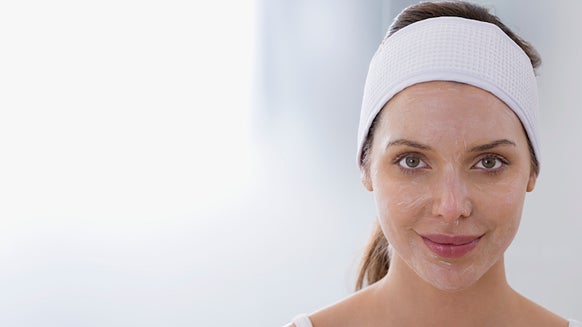How to Get Rid of Dark Circles Under the Eyes

The eyes are the first part of the face that shows their age, usually with dark circles and under-eye bags. While stubborn darkness and puffiness often take up residence under the eye, they happen for several reasons. Yes, a sleepless night or two can leave your eyes looking tired and a little less youthful come morning, but there’s a lot more to what’s occurring under the skin that’s causing visible changes on the surface.
Dark under-eye circles and under-eye bags are grouped in the same category but are different issues. Puffy bags can result from inflammation and swelling accompanied by herniated fat pads, pushing everything outwards. But if under puffiness and bags isn’t a daily occurrence, chances are lifestyle habits influence them more than age-related changes. On the other hand, hard-to-cover darkness under the eyes is caused by constricted blood vessels that become more visible as the skin starts to thin.
No matter if under-eye bags or dark circles are problematic, there are several easy-to-incorporate lifestyle changes and effective skincare products to make the eyes look rejuvenated and fresh again. Ahead, we share how to get rid of dark circles and under-eye bags once and for all.
What Causes Dark Circles Under Eyes?
Dark circles may be the bane of your existence, and their causes vary from person to person. Dark under-eye circles, which can range in color from dark blue or purple to brown and even black, can make you look tired, sad, unhealthy, or old. And although it may seem like everyone over the age of 40 suffers from dark circles, the reason for their stubborn appearance isn’t always the same from one day to the next.
For the most part, dark circles are harmless and pose no threat to your health, but they can be challenging to accept strictly because of how they make the eyes and face look. No skin type, skin tone or age group is immune to experiencing dark under-eye circles either.
Dark under-eye circles usually result from aging, thinning skin that magnifies the underlying blood vessels or age-related herniation chances to fat pads under the eyes that make darkness more apparent. From there, other factors influence dark under-eye circles, which include:
Aging: With age, the skin around the eyes starts to thin out and lose firmness, causing the blood vessels underneath to show through. Genetics: If your mother, father, or even grandparents have dark under-eye circles, you may, too, since they have a genetic component. Constant rubbing: If you rub the skin on and around your eyes constantly, there’s a risk of causing the skin to become inflamed and swell and damage the blood vessels. Skin conditions: Some dermatological skin conditions like eczema and contact dermatitis can lead to dilated blood vessels that show through the skin. A lack of sleep: Sleepless nights can instigate tired-looking eyes with blood that pools in the blood vessels, causing dark circles. Hyperpigmentation: Some people create an abundance of melanin in their skin, causing patches of discoloration that can arise under the eyes. Lifestyle factors: Drinking too much alcohol, eating too many processed foods, high-stress levels, and other lifestyle choices can cause darkness under the eyes. A lack of volume: Just like other areas of the face, the eye area loses volume, as well as collagen and elastin, naturally as the face ages. With less volume in the area, shadowing and darkness can occur. Allergies: Younger people who experience persistent dark circles may result from allergies. The allergy causes inflammation and itchy skin, relieved temporarily by rubbing the eyes, which breaks or damages the blood vessels. Dehydration: When the body is dehydrated, the skin’s tissues shrink and begin to look shriveled on the surface. When that happens to the eyes, the tissues under the eyes react the same way, and the blood vessels become more prominent. Medical conditions: Some underlying healthy issues and medical conditions, like anemia, vitamin and nutritional deficiencies, a lack of iron, hypothyroidism, and malabsorption syndromes, can cause excessive darkness under the eyes.
No matter the cause of dark circles, the thinner and lighter the skin, the more pronounced the dark circles are.
How to Get Rid of Bags Under Your Eyes
Under-eye bags differ from dark under-eye circles, although you can experience both. While some of us don’t develop puffy, loose skin under the eyes until we reach middle age, others notice them as early as their 20s when collagen and elastin production dwindles.
To minimize the appearance of undereye bags so that the skin under the eyes looks smoother, there are a few changes you’ll need to make, including incorporating some new skincare products.
Limit swelling: One of the main reasons for puffiness under the eyes is swelling of the skin and fluid retention. Limiting the amount of salt you eat and alcohol you drink can help decrease under-eye bags. Salty foods are known to retain water, which can affect the eyes. Instead, incorporate anti-inflammatory, water-soluble fruits and vegetables like carrots, oranges and even pineapple with anti-inflammatory and anti-swelling bromelain. Sleep with your head elevated: While it may not be the most comfortable position, sleeping on your back with your head elevated can help decrease the amount of fluid that settles under the eyes. This way, when you wake up in the morning, your eyes will be less puffy. Also, strive to get at least eight hours of uninterrupted sleep nightly. Drink more water: Staying hydrated is key to healthy-looking skin and drinking plenty of water throughout the day (aim for at least eight glasses per day) helps prevent stagnant blood and lymph flow. Plus, the more water you drink, the less dehydrated the eyes and skin will look. Take an allergy pill if you have allergies: If you suffer from consistent or seasonal allergies, an over-the-counter antihistamine can help take down puffiness under the eyes. That’s because allergy pills contain active ingredients that limit inflammation and swelling. Invest in ice globes: You may have seen ice globes—those cute circular beauty tools that work best when served chilled—or other cryotherapy tools on social media as a quick and effective way to reduce under-eye bags. Rolling or rubbing anything cold under the eyes helps decrease swelling, forces the blood vessels to constrict and minimizes dark circles and bags. While glass and metal are the best materials since they conduct and hold in cold temperatures, treating the under-eye area with something cold pushes stagnant fluid out from the area to flush it out. Incorporate eye creams with caffeine: Like a cup of coffee for your eyes, applying an eye cream with caffeine will help wake up the area and reduce puffiness and bags. That’s because caffeine works as a vasoconstrictor to constrict blood vessels and improve circulation, temporarily reducing puffiness and even dark circles. As a bonus, caffeine doubles as an antioxidant to protect the delicate eye area from free radical damage that can age the skin around the eyes and worsen puffiness.
The Best Eye Creams for Dark Circles
If you’re keen on finding the best eye creams for dark circles, you’ll want to look for one that stimulates collagen to thicken the skin and camouflage the blood vessels underneath while brightening agents like vitamin C and caffeine help deflect the appearance of darkness so dark circles are less obvious.
1. SkinMedica Instant Bright Eye Cream (0.5 fl. oz.)
2. SkinCeuticals AOX Eye Gel (0.5 fl. oz.)
3. Wander Beauty Baggage Claim Gold Eye Masks - Gold (6 pair)
4. Jan Marini Age Intervention Eye Cream
5. Natura Bissé Diamond Cocoon Sheer Eye (0.08 oz.)
6. BeautyStat Universal C Eye Perfector Dark Circle Reducing 5% Vitamin C Eye Cream 0.5 fl. Oz

From the latest hair and makeup trends to the best solutions for your skin issues, we've got all your beauty concerns covered!
